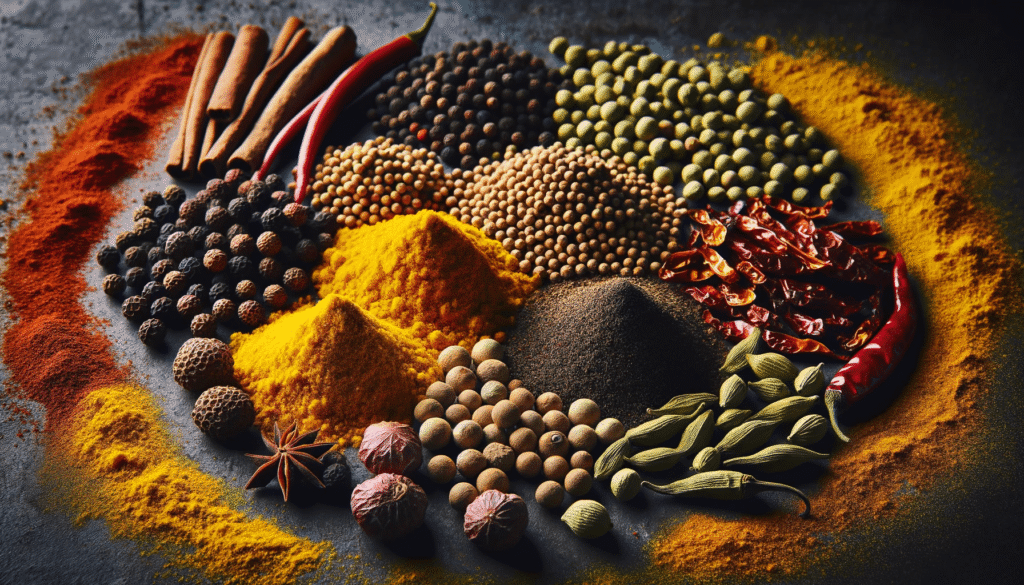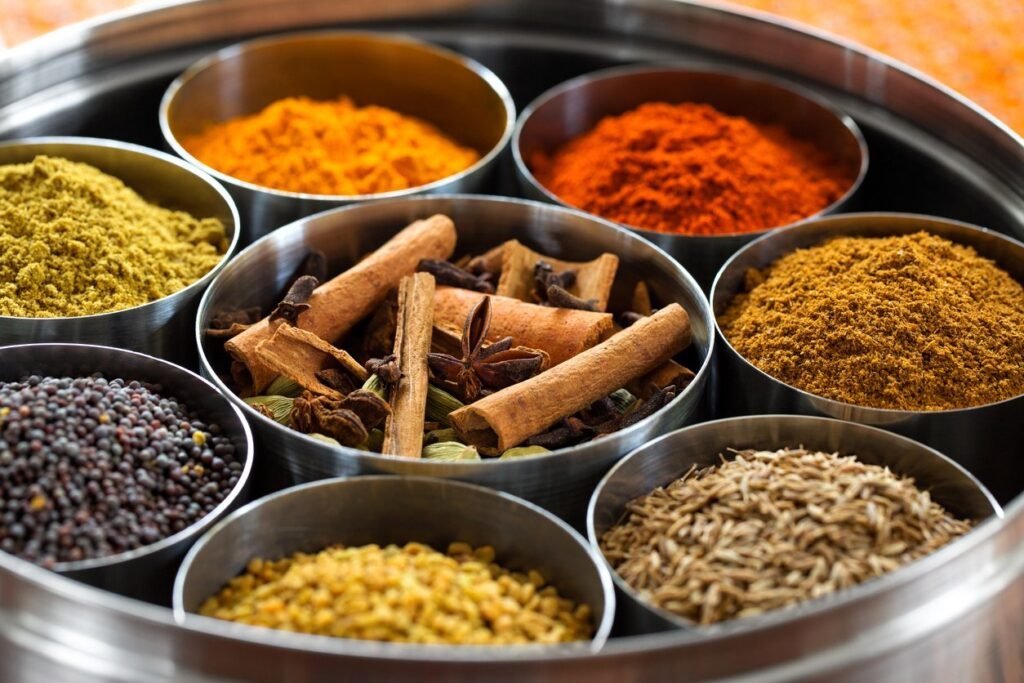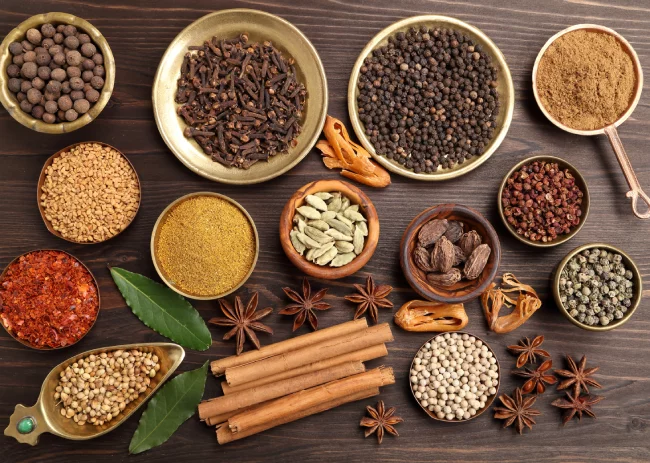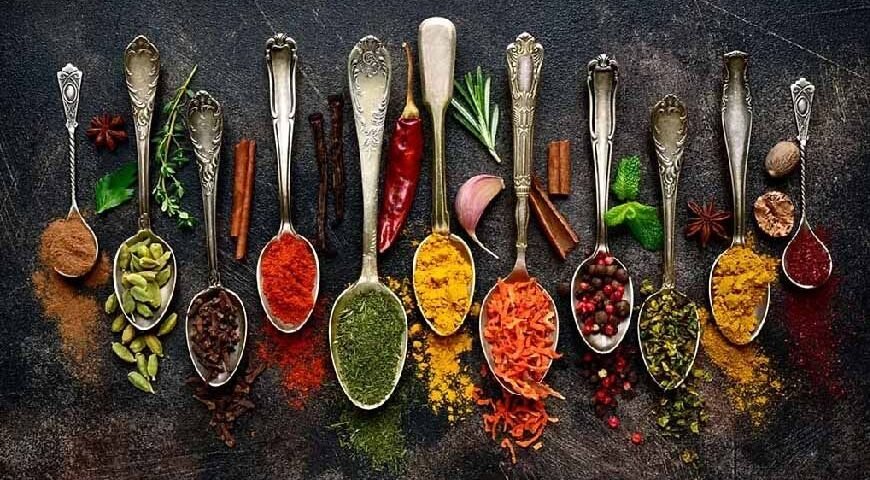What Spices Make Indian Food So Flavourful? Find Out Here

Agra Famous Food: Must-Try Traditional Dishes for Every Food Lover
May 17, 2025Indian cuisine is celebrated globally for its vibrant flavours, enticing aromas, and unforgettable taste. But what truly defines the soul of Indian food? The answer lies in the Indian spices for food — a magical mix of herbs and spices that breathe life into every dish. From tempering dals to marinating meats and cooking vegetables, the unique blend of Indian masala transforms simple ingredients into gourmet meals.
In this blog, we’ll explore what makes Indian spices so exceptional. We’ll take you through an Indian spices list with names, talk about pure Indian spices, give you a comprehensive khada masala list, and explain the difference between spices and condiments. Whether you’re a novice or a spice aficionado, this guide is your one-stop resource.
The Cultural Essence of Indian Spices
The use of Indian spices for food dates back thousands of years, rooted in Ayurvedic practices and ancient cooking traditions. Not only do they enhance flavour, but many herbs and spices in Indian cooking also carry medicinal properties, improve digestion, and preserve food.
From north to south, every region in India has its own distinct Indian masala combinations, making the cuisine diverse and flavourful. What’s common across all these variations is the reliance on a core group of aromatic spices, used either whole (khada masala) or ground.

What is Indian Masala?
The term masala refers to a spice blend. It can be dry, wet (like ginger-garlic paste), or cooked into a dish. A typical Indian masala can include a combination of several ingredients, depending on the dish:
- Coriander
- Cumin
- Turmeric
- Garam Masala
- Red Chili Powder
- Asafoetida (Hing)
These components combine to form a powerful foundation for countless recipes. Regional blends like Garam Masala, Chaat Masala, and Sambar Masala further enrich the Indian spice list.
Indian Spices List With Names
Understanding the names and roles of each spice can take your cooking skills to the next level. Here’s an Indian spices list with names in English and Hindi:
| English Name | Hindi Name | Usage |
|---|---|---|
| Cumin | Jeera | Used whole or ground in tadkas |
| Coriander | Dhania | Ground into masalas or added whole |
| Turmeric | Haldi | Gives yellow color & antiseptic use |
| Red Chili Powder | Lal Mirch Powder | Adds heat and color |
| Mustard Seeds | Rai/Sarson | Used in pickles and tempering |
| Fenugreek | Methi | Adds bitterness and aroma |
| Cloves | Laung | Used in biryanis and curries |
| Black Pepper | Kali Mirch | Adds heat and pungency |
| Cardamom (Green & Black) | Elaichi (Hari/Kali) | Adds sweet aroma to desserts & rice |
| Asafoetida | Hing | Powerful aromatic, good for digestion |
| Bay Leaves | Tej Patta | Added to rice and stews |
| Nutmeg | Jaiphal | Used in small amounts for warmth |
| Fennel Seeds | Saunf | Used in sweets, drinks, and curries |
This Indian spice list is essential for anyone looking to stock up on authentic ingredients. Remember, using pure Indian spices ensures optimal flavour and health benefits.

Khada Masala List: Whole Spices That Pack a Punch
The term khada masala refers to whole, unground spices that are usually fried in oil or ghee at the start of cooking to release their full aroma. Here’s a khada masala list often used in Indian kitchens:
- Cinnamon Sticks (Dalchini)
Adds warmth and sweetness to dishes. - Cloves (Laung)
Intensely aromatic, used in rice, meat, and pickles. - Black Cardamom (Badi Elaichi)
Smoky and bold, used in biryanis and gravies. - Bay Leaves (Tej Patta)
Adds a subtle aroma to dals and pulaos. - Cumin Seeds (Jeera)
Used in tadka for curries and dals. - Mustard Seeds (Rai)
Essential for South Indian cooking. - Dried Red Chilies
Add heat and color to tadkas.
Using Indian spices for food in their whole form not only elevates aroma but also provides visual and textural complexity.
Spices and Condiments: What’s the Difference?
While both enhance flavour, spices and condiments serve different roles in cooking.
- Spices are typically derived from seeds, roots, bark, or fruit. They are added during cooking for aroma and flavour.
- Condiments are usually served on the side or added post-cooking — like chutneys, pickles, and sauces.
Common Indian condiments include:
- Tamarind Chutney
- Mint-Coriander Chutney
- Mango Pickle
- Raita (yogurt with spices)
Together, spices and condiments make Indian cuisine a flavourful experience.

Herbs and Spices in Indian Cooking
In addition to traditional spices, herbs and spices play a crucial role. While the line between the two can blur, herbs are typically the leafy parts of a plant.
Common Herbs:
- Cilantro (Dhaniya): Used as garnish in nearly every dish.
- Mint (Pudina): Used in chutneys and drinks.
- Curry Leaves (Kadi Patta): A staple in South Indian cooking.
Herbal Spices:
Some spices like fennel and coriander also act as herbs due to their medicinal benefits. The use of herbs and spices in Indian cuisine not only adds complexity but also offers significant health benefits.
Popular Indian Spice Blends
Besides individual spices, Indian cuisine heavily relies on spice blends tailored to specific dishes. These blends are often handed down through generations and form the heart of authentic Indian meals.
- Garam Masala – The quintessential Indian spice blend. Typically includes cinnamon, cloves, cardamom, black pepper, cumin, and nutmeg.
- Tandoori Masala – For grilled dishes like tandoori chicken. Contains paprika, cumin, coriander, garlic, and ginger.
- Chaat Masala – A tangy, salty mix used in snacks and salads. Includes black salt, dried mango powder, and asafoetida.
- Panch Phoron – A Bengali 5-spice blend (fenugreek, nigella, cumin, black mustard, fennel seeds).
These customised Indian masala mixes are what give each dish its signature flavour. Don’t forget — only pure Indian spices can deliver that authentic taste.
Why Use Pure Indian Spices?
Many commercial spice blends contain fillers or preservatives. Choosing pure Indian spices — unadulterated and freshly ground — ensures your food retains its nutritional and medicinal value.
Tips for Buying:
- Look for certified organic or single-origin labels.
- Store in airtight containers away from sunlight.
- Buy whole spices when possible and grind them fresh.
The use of pure Indian spices amplifies flavour, aroma, and overall culinary experience.
The Role of Indian Spices in Global Cuisine
Thanks to globalisation, Indian spices for food are now widely used in cuisines across the world — from Thai curries to Moroccan tagines. The popularity of Indian spice blends like garam masala and turmeric in Western cooking has exploded, not just for taste but also for health benefits.
Whether you’re making a classic Indian curry or experimenting with fusion dishes, the right Indian masala makes all the difference.

How to Start Cooking With Indian Spices
If you’re new to Indian cooking, here’s how to begin:
- Start with the basics: cumin, turmeric, coriander, and chili powder.
- Use whole spices to temper oils before cooking.
- Experiment with blends like garam masala or chaat masala.
- Balance flavours: sweet, salty, spicy, sour, and umami.
The rich layering of herbs and spices, when done correctly, is what turns Indian cuisine into a mouthwatering experience.
Final Thoughts: Why Indian Spices Make Food So Flavorful
The secret to the irresistible taste of Indian food lies in its complex and thoughtful use of Indian spices for food. From whole khada masala to regional Indian masala blends, from spices and condiments to fresh herbs and spices — every element contributes to the final taste explosion.
Use this comprehensive Indian spice list with names to elevate your own culinary skills. Remember to choose pure Indian spices for the best results, and don’t be afraid to explore regional variations that reflect India’s rich culinary diversity.
Whether you’re cooking a simple dal or a festive biryani, the proper use of Indian spices for food will turn your kitchen into a flavourful wonderland. And if you truly want to experience these flavours firsthand, nothing beats joining the best India food tour — where you can explore regional dishes, local spice markets, and authentic masala-making traditions right at the source.

